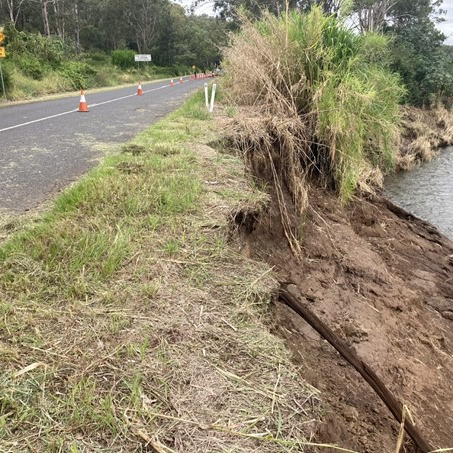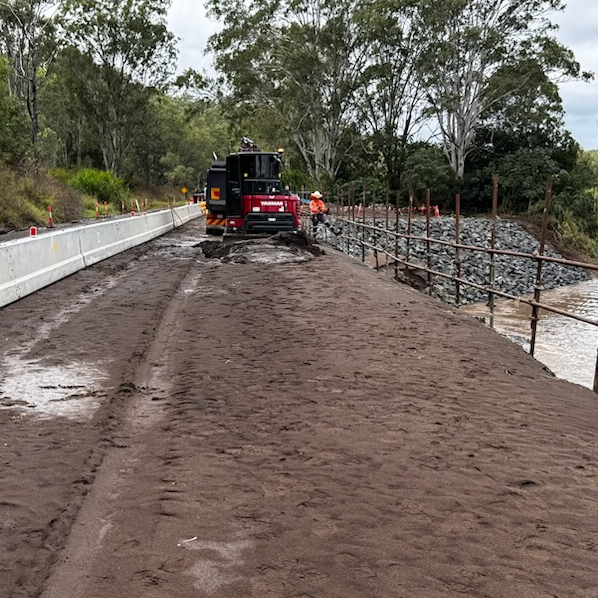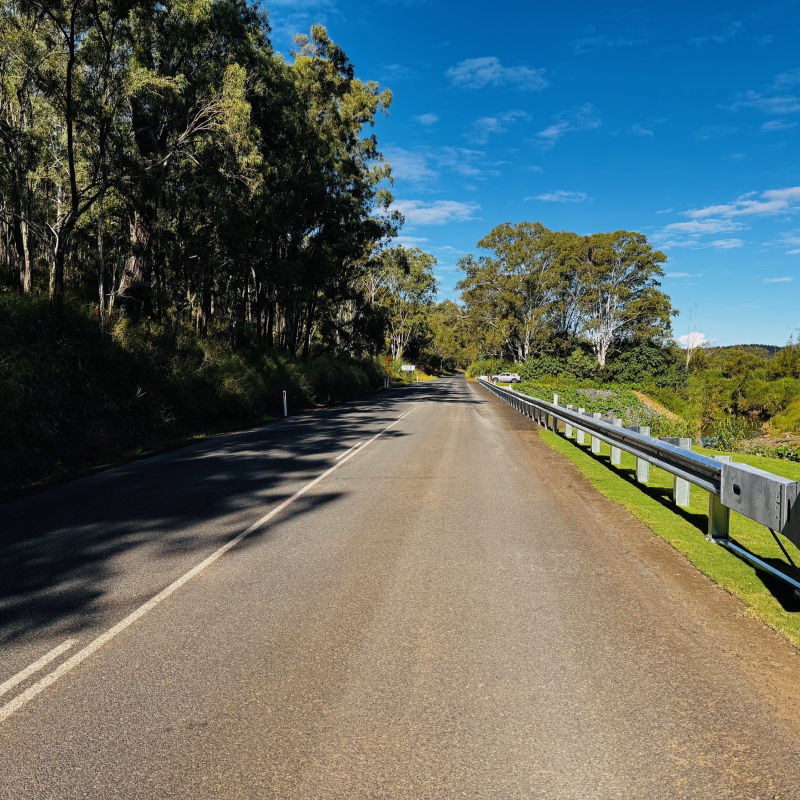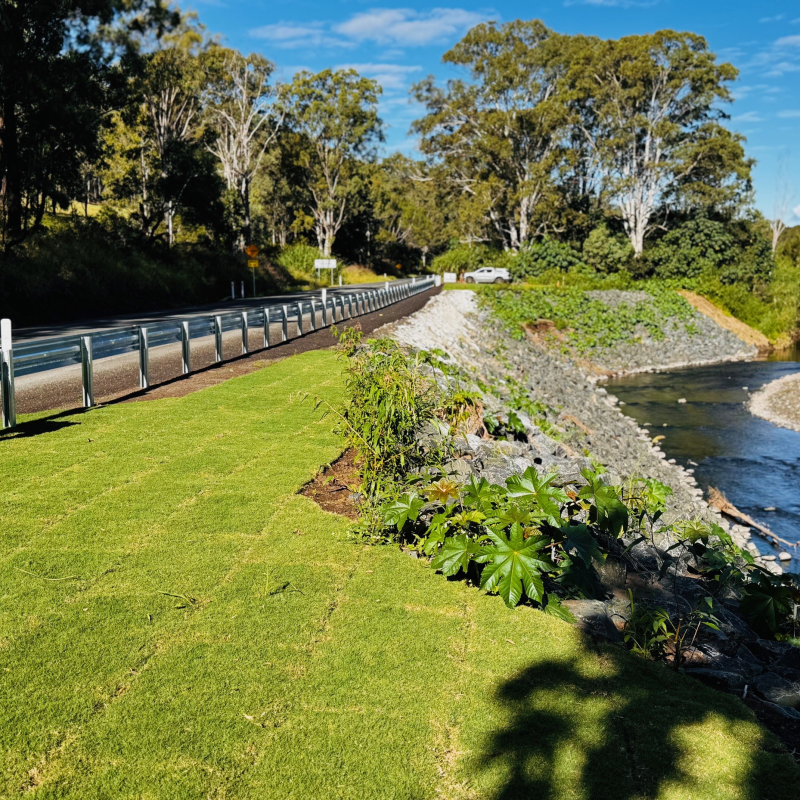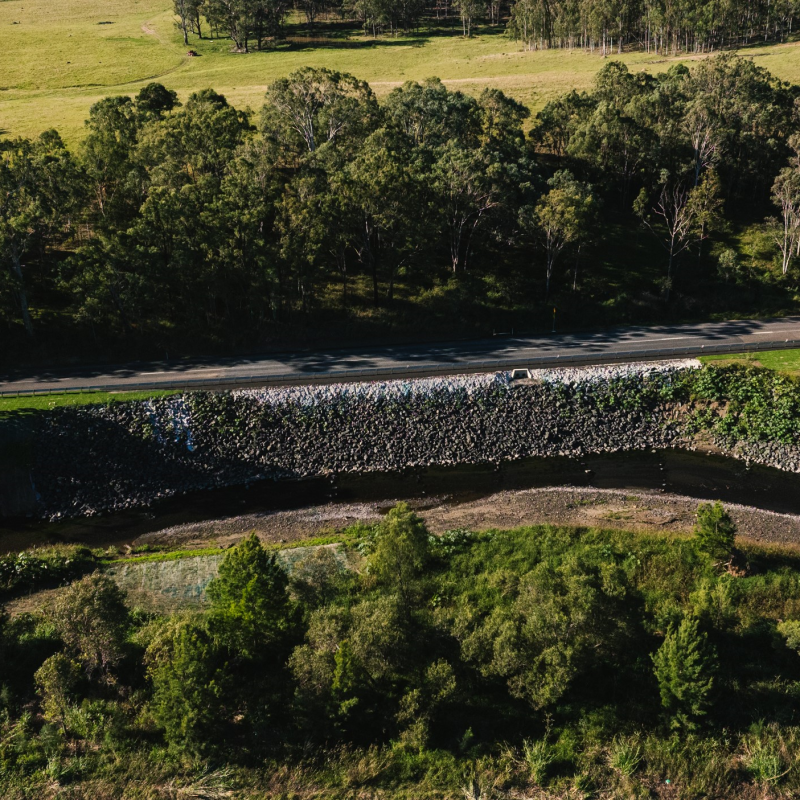Resilience and safety prioritised in rebuild of “food bowl’s” backbone
Mulgowie Road is more than just a link between the Lockyer Valley towns of Laidley and Mulgowie in South East Queensland.
It’s the backbone for an area recognised as one of Australia’s most significant food-producing regions.
Mulgowie Road plays a vital role in the lives of the "food bowl” community supporting the transport of produce to markets and processing facilities, fostering social connectivity, and serving as a critical route for emergency services.
But the road’s proximity to Laidley Creek places it under constant threat of damage from flooding.
Repeated erosion along the creek's banks has posed ongoing challenges to the road’s integrity, safety, and usability.
Mulgowie Road sustained major damage during the significant flood events of early 2022 when a combination of severe erosion, scouring, potholes, and cracking compromised the road.
Further damage was inflicted when ex-Tropical Cyclone Kirrily struck in February 2024.
Recognising the importance of enhancing resilience, Queensland’s Department of Transport and Main Roads (TMR) pursued a solution offering long-term protection and value for money when planning Mulgowie Road’s reconstruction.
Guided by considerations around safety, environmental sustainability, and constructability, TMR’s restoration works adopted innovative measures to future-proof the road.
Geotechnical investigations and detailed design studies identified the need for comprehensive embankment stabilisation.
At the site of critical damage, an eight-metre-high, 110-metre-long benched rock embankment was constructed using tested and proven rock batter protection, selected for its cost-effectiveness and ease of implementation.
Upstream protection measures, including a strategically placed cut-off wall, rock armouring, and vegetation planting, complemented the embankment work to reinforce stability and further mitigate flood risks.
The timing of construction works was critical, with works commencing in October 2024 prior to the wet season to minimise impacts.
Complying with strict environmental guidelines required measures such as sediment traps, silt fences, and temporary barriers to ensure that fish passageways were maintained and no debris entered downstream waterways during reconstruction.
In March 2025, with the complex roadworks nearing completion, ex- Tropical Cyclone Alfred put the improvements to the test.
Impressively, the newly developed embankment withstood the torrential rainfall and the resulting flooding, protecting the creek bank and road from further erosion and demonstrating the resilience built into the reconstruction process.
Completed in May 2025 the restored road is now a stabilised, dual-lane route capable of supporting the community’s economic, social, and emergency needs.
This major reconstruction project was jointly funded by the Australian and Queensland Governments under the Disaster Recovery Funding Arrangements (DRFA), a critical mechanism for repairing disaster-damaged assets.
The funding ensured that the road was rebuilt to a standard that prioritises resilience, safety, and sustainability.
By addressing the underlying vulnerabilities and incorporating robust design features, the DRFA allowed Mulgowie Road to be built back better than ever.
